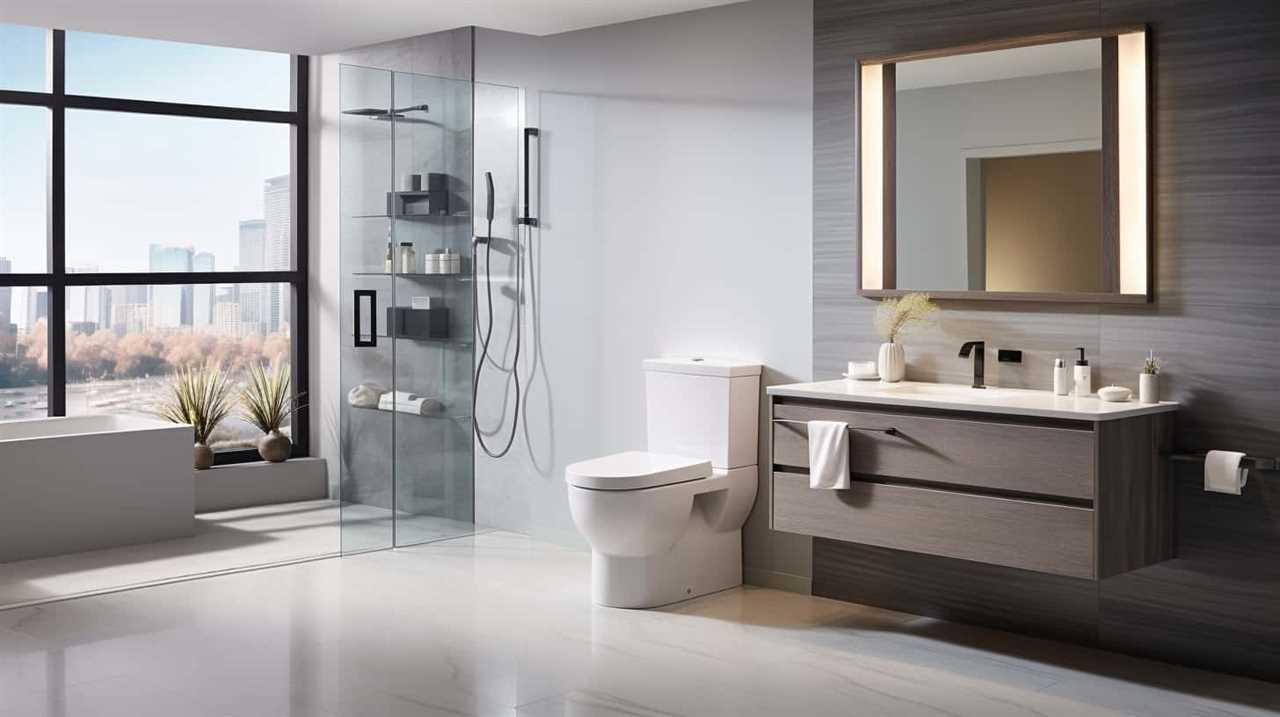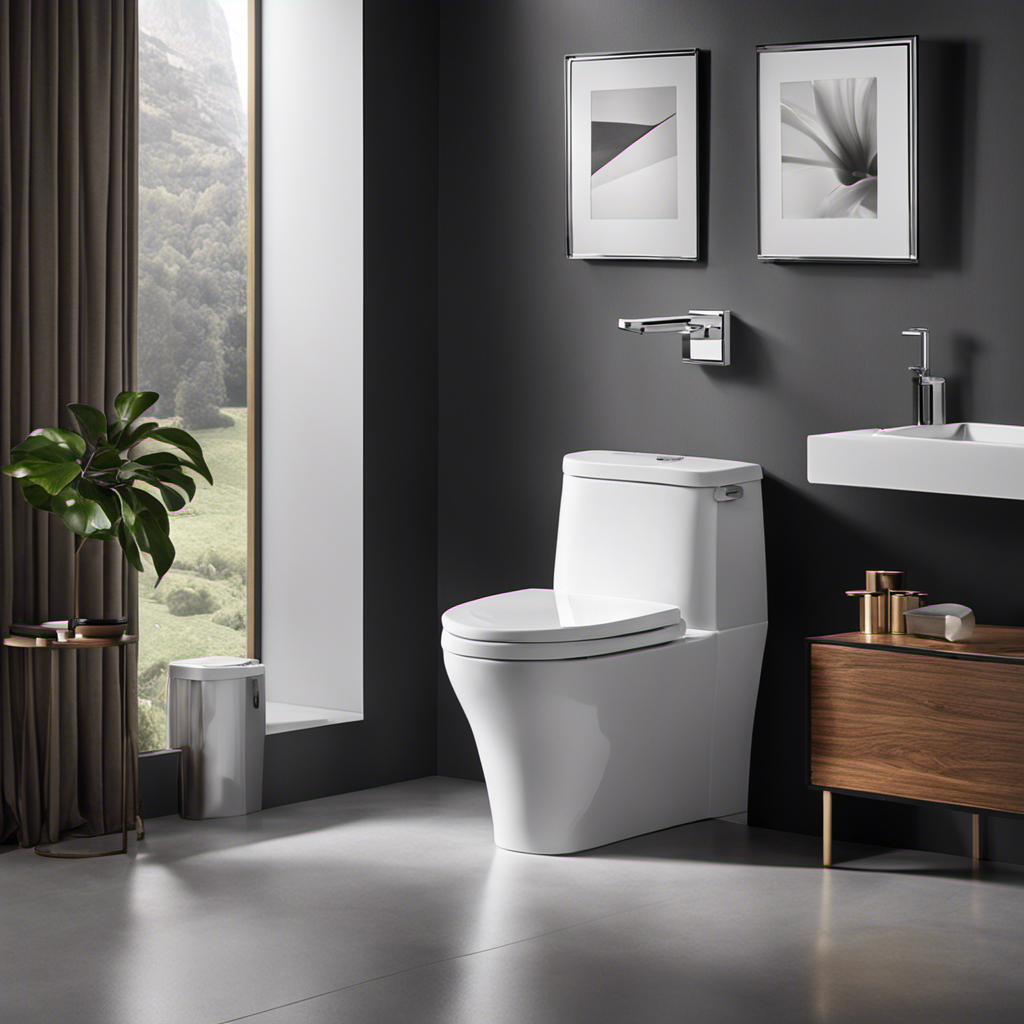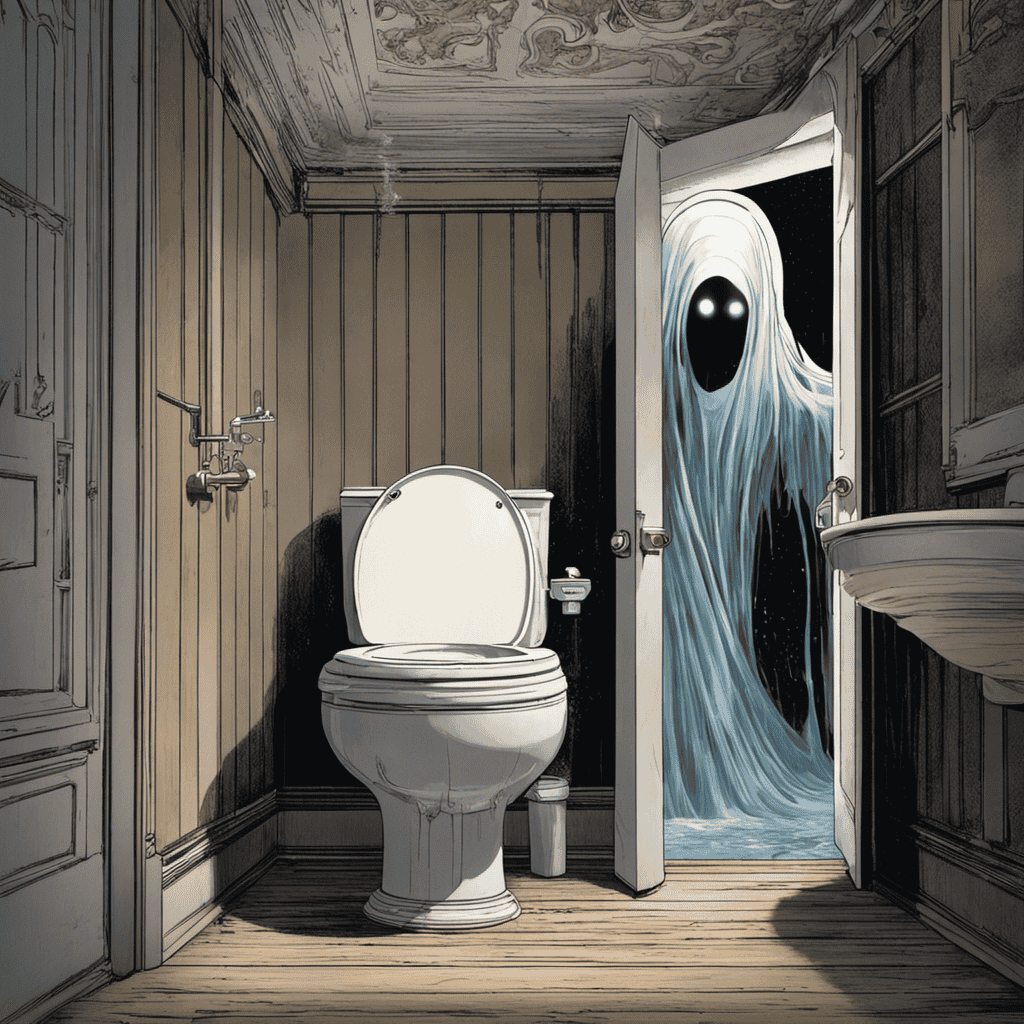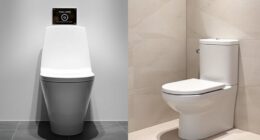Finally, a toilet that intelligently handles waste has arrived! The dual flush feature, an impressive advancement in toilet technology, provides the option to select from two different flushing levels.
Prepare to plunge into a world of water-saving wonders and heightened efficiency. In this article, we will unravel the mystery behind the dual flush phenomenon.
From understanding how it works to exploring its benefits and maintenance tips, we shall equip you with the knowledge needed to make an informed choice.
Key Takeaways
- Dual flush toilets offer two flush options – one for liquid waste and another for solid waste.
- Dual flush toilets reduce water consumption and promote water conservation.
- Dual flush toilets help minimize the strain on wastewater systems and mitigate the effects of droughts and water scarcity.
- Dual flush toilets align with eco-friendly principles and practices, promoting sustainability and resource efficiency.
Definition of Dual Flush
In our experience, dual flush refers to a toilet system that allows users to choose between two different water volumes when flushing, typically a lower volume for liquid waste and a higher volume for solid waste. This flushing technology is designed to prioritize water efficiency by reducing the amount of water used for each flush.
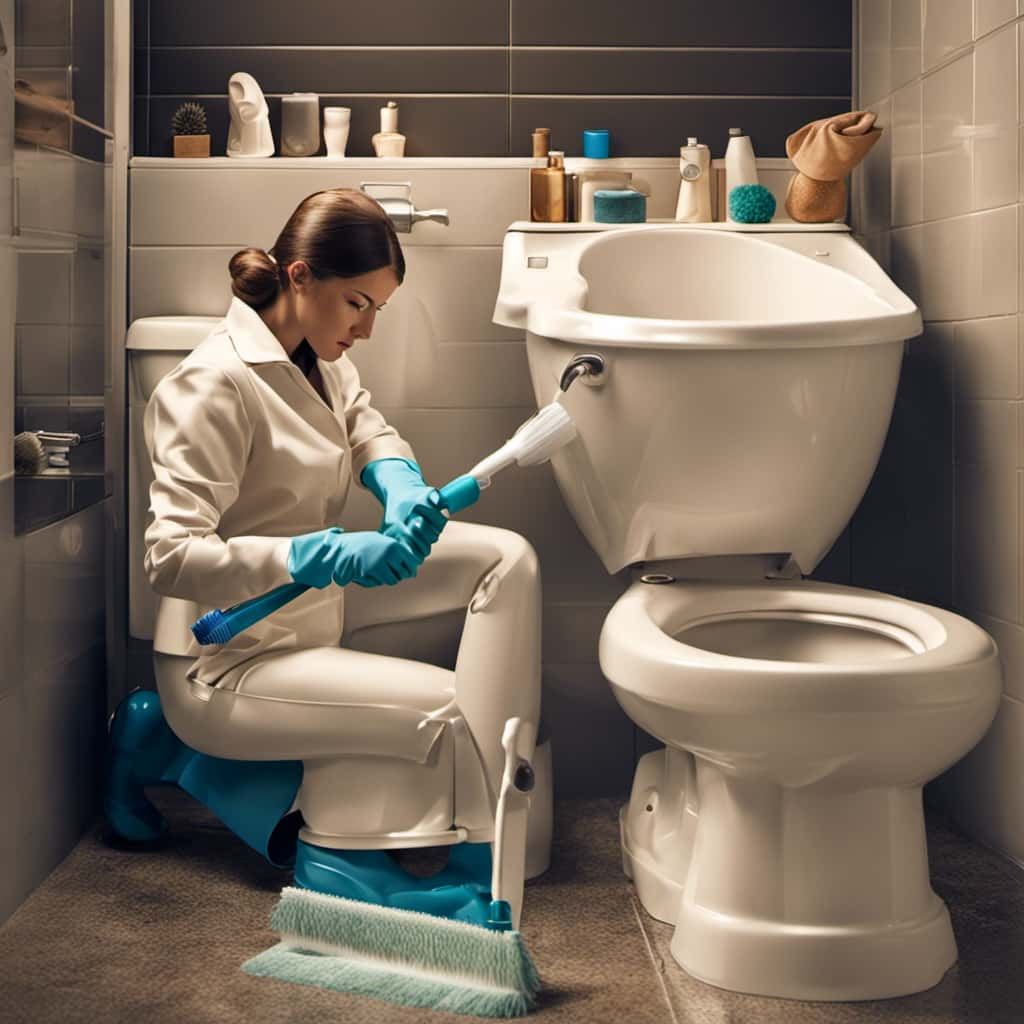
The lower volume option is suitable for liquid waste, as it requires less water to effectively remove it from the bowl. On the other hand, the higher volume option provides the necessary power to flush away solid waste. By giving users the ability to select the appropriate water volume for different types of waste, dual flush toilets promote water conservation without compromising on flushing effectiveness.
This innovative solution meets the needs of environmentally conscious individuals who are seeking to minimize water wastage in their daily lives.
How Dual Flush Toilets Work
To understand how dual flush toilets work, we need to examine the inner mechanisms of these water-saving fixtures.
The flush mechanism is the key component that allows for the dual functionality of these toilets. It consists of two buttons or levers, one for a partial flush and the other for a full flush.

When the partial flush button is pressed, a smaller amount of water is released from the tank, typically around 0.8 gallons (3 liters). This is suitable for liquid waste.
On the other hand, when the full flush button is pressed, a larger amount of water, usually around 1.6 gallons (6 liters), is released. This is more appropriate for solid waste.
This dual flush system ensures water efficiency by allowing users to choose the appropriate amount of water for each flushing scenario.
Understanding how these mechanisms work is essential in appreciating the water-saving benefits of dual flush toilets.
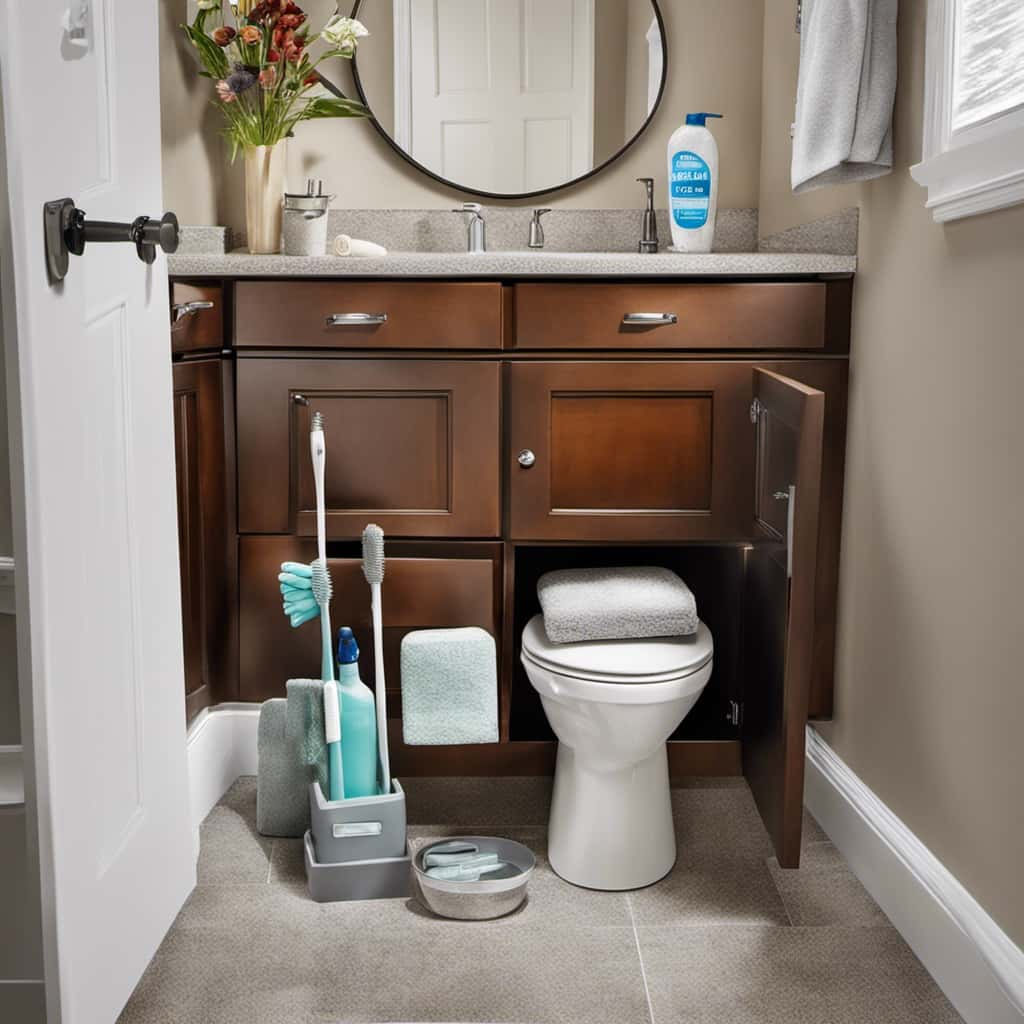
Water Saving Benefits
Now let’s delve into the water-saving benefits of dual flush toilets and explore how they can help us conserve a significant amount of water.
- Reduced water consumption: Dual flush toilets offer two flushing options – a full flush for solid waste and a half flush for liquid waste. By using the appropriate flush option, we can minimize water usage and conserve this precious resource.
- Sustainability: Water conservation is crucial for the environment, and dual flush toilets provide an eco-friendly solution. By reducing water consumption, we can contribute to sustainable practices and help preserve our natural resources for future generations.
- Cost savings: With dual flush toilets, we can also save money on water bills. By using less water for flushing, we reduce the amount of water that needs to be treated and distributed, resulting in lower utility costs.
Increased Efficiency
Moving on to the subtopic of increased efficiency, let’s explore how dual flush toilets optimize water usage and improve overall performance.
Dual flush toilets are designed to provide two flushing options, one for liquid waste and another for solid waste. This allows users to select the appropriate flush based on their needs, resulting in significant water savings.
Compared to traditional toilets, which typically use around 1.6 gallons per flush, dual flush toilets can use as little as 0.8 gallons for liquid waste and 1.6 gallons for solid waste. This water efficiency not only reduces water consumption but also has a positive environmental impact by conserving this precious resource.
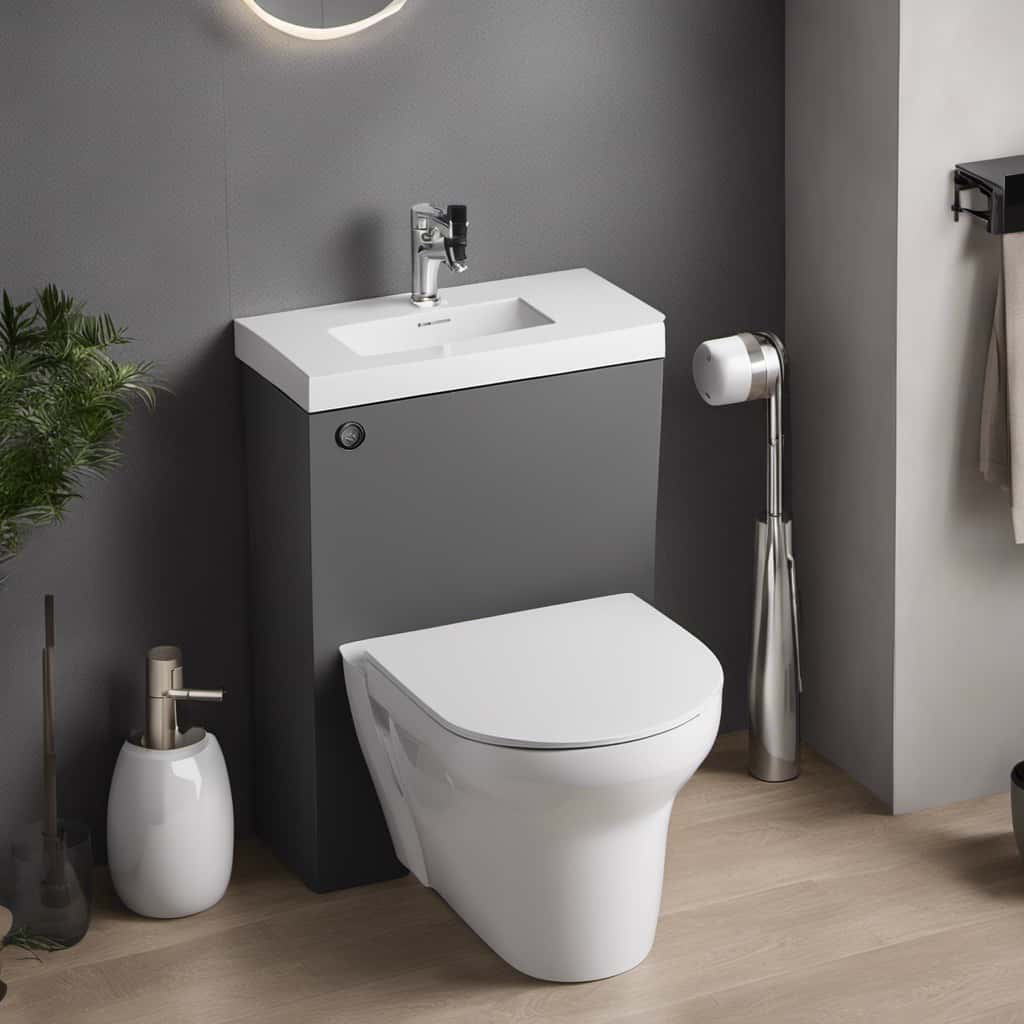
By incorporating dual flush technology into our toilets, we can achieve improved efficiency while minimizing our ecological footprint.
Now, let’s delve into the different flush options available with dual flush toilets.
Different Flush Options
After exploring how dual flush toilets optimize water usage and improve overall performance, let’s now turn our attention to the different flush options available.
When it comes to water efficiency and conservation, it’s important to have multiple flush options that cater to different waste types. Here are three common flush options found in dual flush toilets:
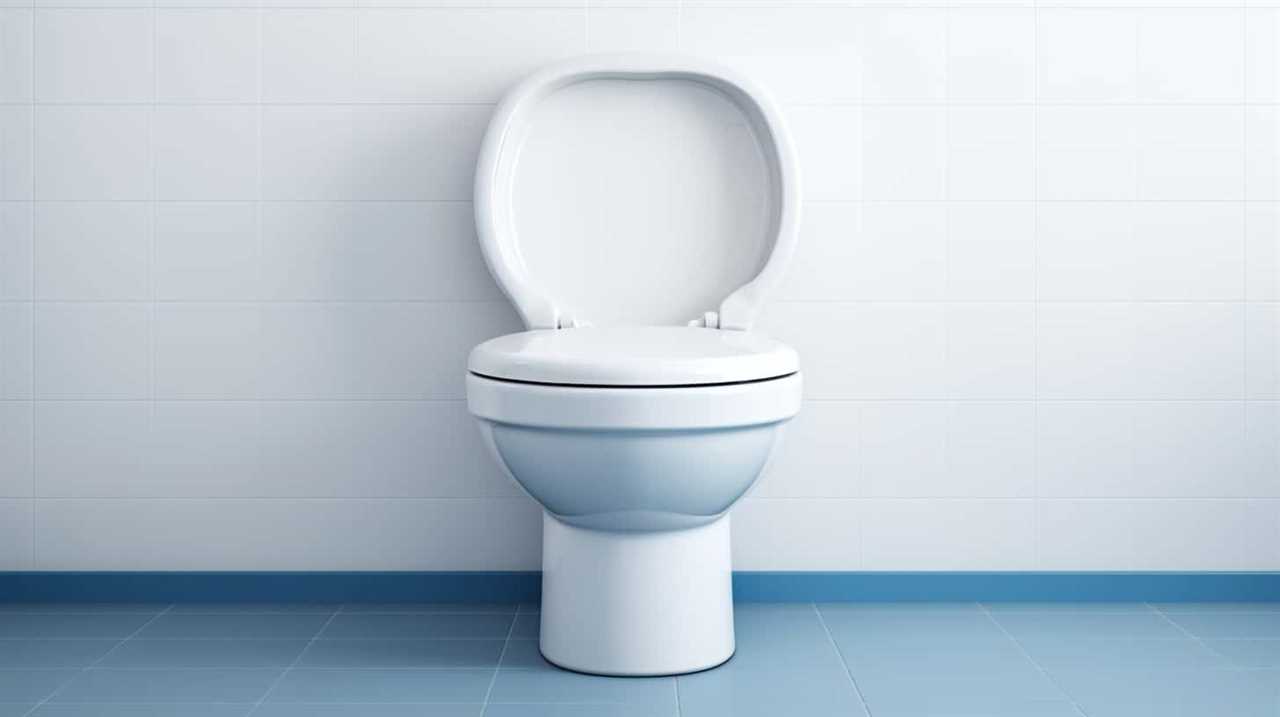
- Full flush: This option uses a higher volume of water to effectively remove solid waste. It’s ideal for heavier waste loads and ensures thorough cleaning.
- Half flush: Designed for liquid waste, this option utilizes a smaller amount of water, reducing unnecessary water consumption. It provides an efficient solution for lighter waste loads and promotes water conservation.
- Dual flush: The hallmark of dual flush toilets, this option combines both the full and half flush options. It allows users to choose the appropriate flush for the specific waste type, maximizing water efficiency and conservation.
Understanding these different flush options is crucial in making informed decisions about water usage and conservation. Now, let’s delve into understanding the flush buttons and their functionalities.
Understanding the Flush Buttons
Continuing from our exploration of different flush options, let’s now delve into understanding the functionality of the flush buttons on a dual flush toilet.
The flush button mechanism is a crucial component of a dual flush toilet, as it allows users to choose between a full flush and a half flush. Typically, the larger button is used for a full flush, which is more suitable for solid waste. On the other hand, the smaller button is used for a half flush, which is sufficient for liquid waste. It’s important to note that the flush buttons may vary in design and placement depending on the brand and model of the toilet.
Troubleshooting common issues with the flush buttons can involve checking for any blockages or debris that might be hindering their operation. Additionally, ensuring that the flush buttons are properly aligned and securely attached to the flush mechanism can help prevent any malfunctioning. If the buttons aren’t responsive or don’t provide the desired flushing action, it may be necessary to consult a professional plumber for further assistance.
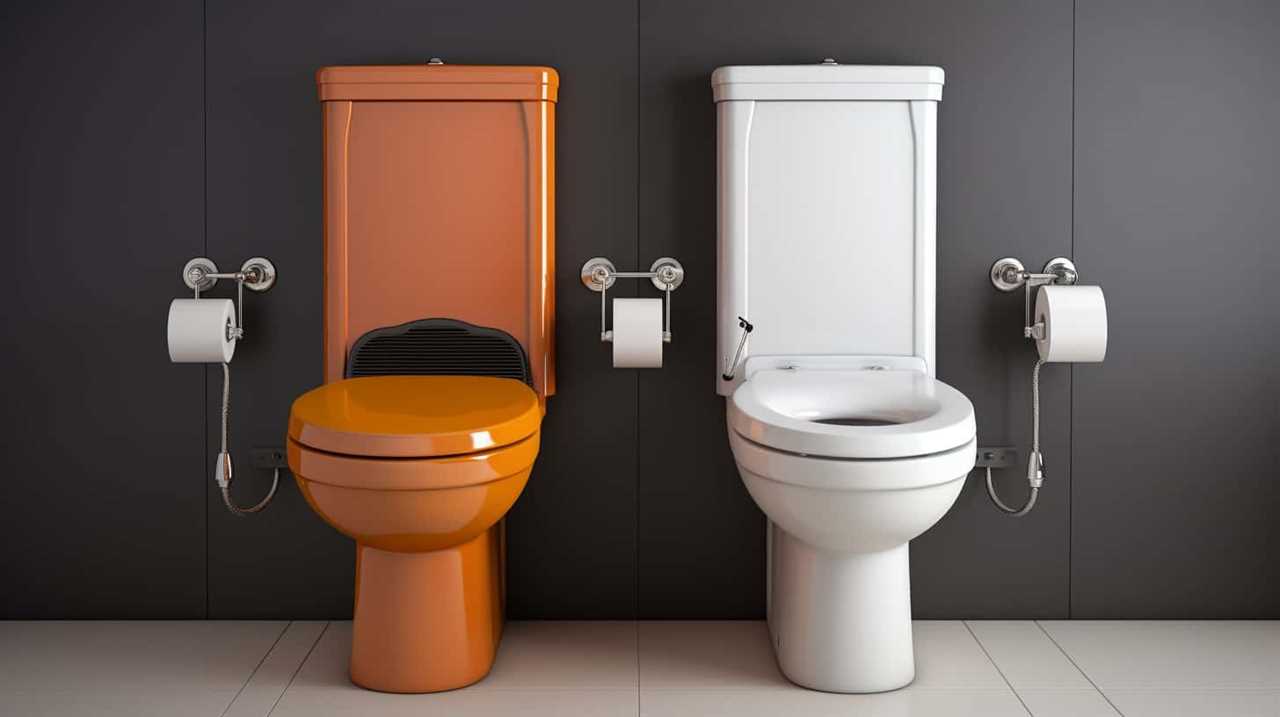
Understanding the flush button mechanism and troubleshooting common issues can help maintain the efficiency and functionality of a dual flush toilet.
Water Consumption Comparison
When comparing water consumption, there are several key points to consider regarding dual flush toilets.
Firstly, the benefits of dual flush toilets include their ability to save water and reduce overall water usage.
Secondly, the water-saving advantages of dual flush toilets are significant, as they offer two different flush options for liquid and solid waste.
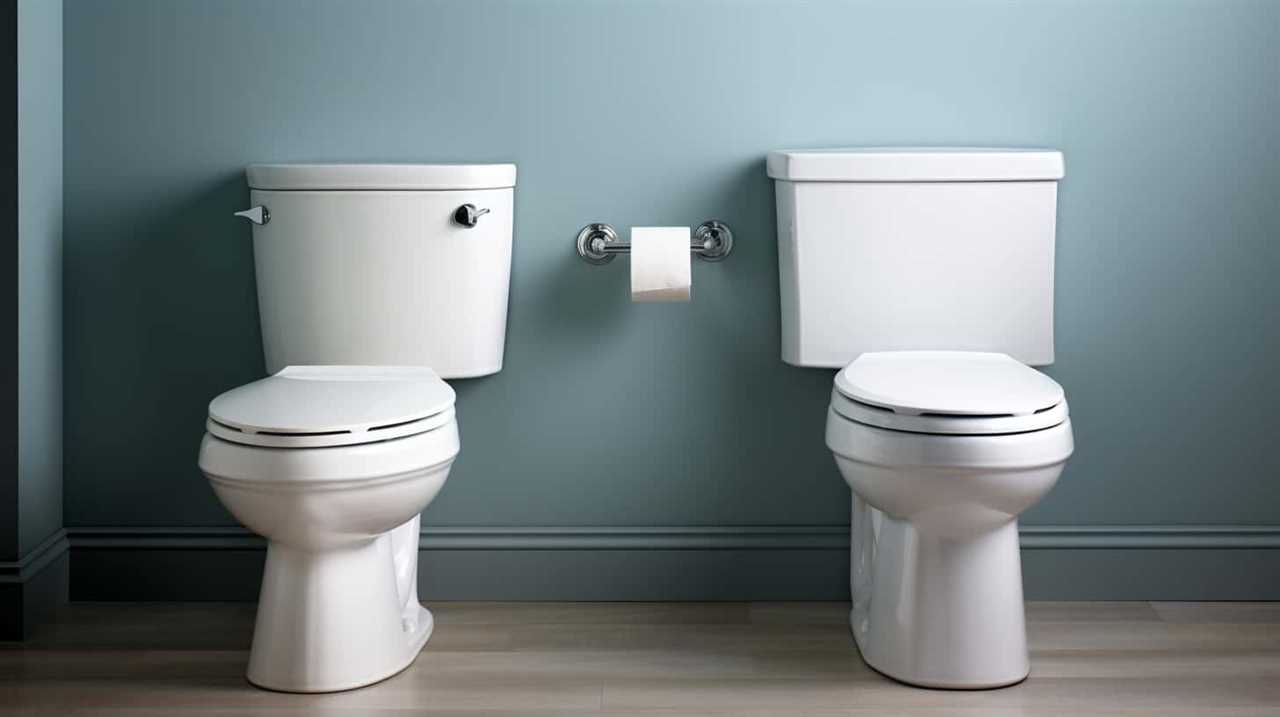
Lastly, an analysis of their environmental impact reveals that dual flush toilets contribute to water conservation efforts and help promote sustainable living.
Dual Flush Benefits
We can reduce water consumption by comparing the water usage of dual flush toilets with traditional toilets. Dual flush toilets offer several benefits when it comes to water conservation. Here are three reasons why dual flush toilets are considered eco-friendly innovations:
- Efficient flushing: Dual flush toilets have two flush options – one for liquid waste and another for solid waste. This allows users to use less water for liquid waste, reducing water wastage.
- Water-saving design: Traditional toilets typically use a set amount of water for each flush, regardless of the waste being flushed. In contrast, dual flush toilets allow users to choose the appropriate flush volume, resulting in significant water savings over time.
- Customizable water usage: With dual flush toilets, users have control over their water consumption. By offering different flush options, users can adapt their toilet usage to their needs while still maintaining proper hygiene.
Water-Saving Advantages
To further explore the benefits of dual flush toilets, let’s delve into their water-saving advantages through a comparison of water consumption. Dual flush toilets are considered one of the most effective water conservation methods available today. By incorporating eco-friendly technology, these toilets allow users to choose between a full flush and a half flush, depending on the waste being disposed of. This not only reduces water usage but also contributes to a more sustainable environment.
To better understand the water-saving advantages of dual flush toilets, let’s compare their water consumption with that of traditional toilets. Below is a table that highlights the average water consumption for both types of toilets:
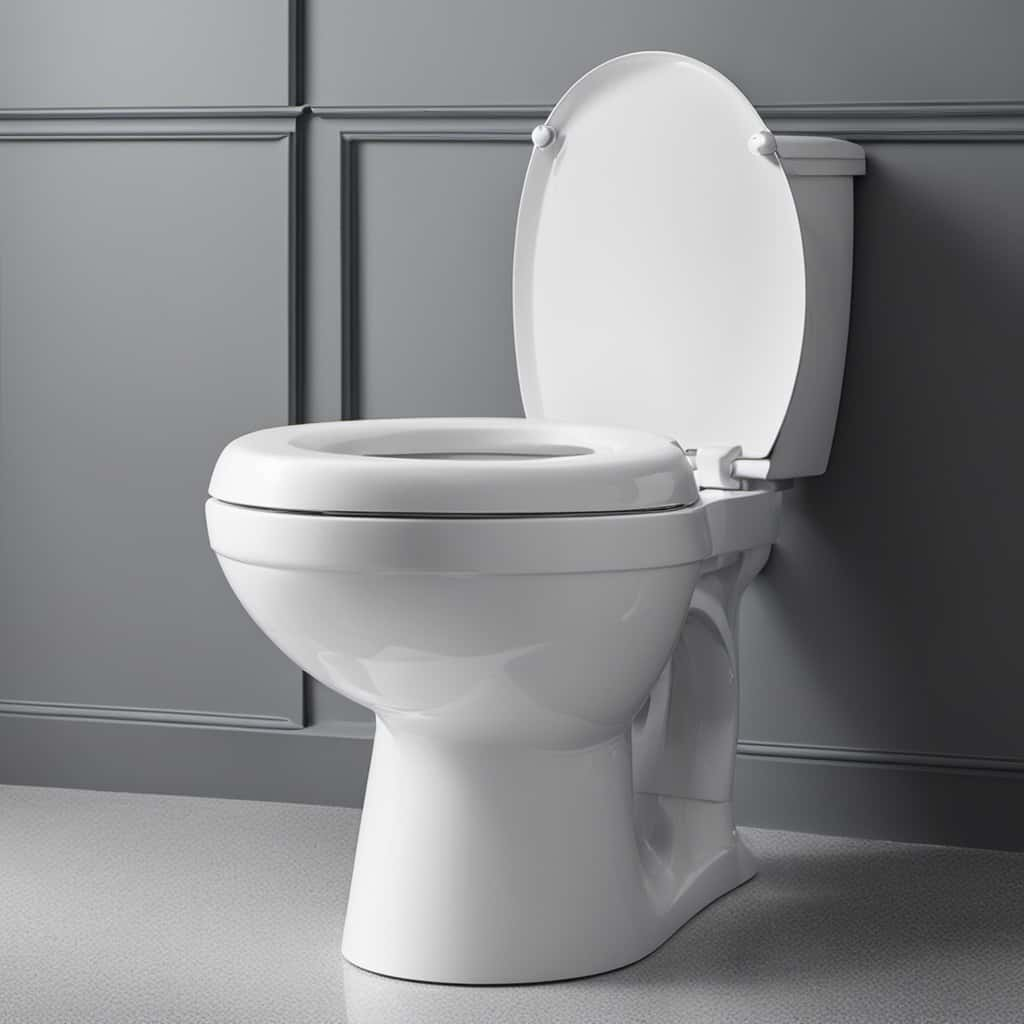
| Toilet Type | Water Consumption (Gallons per Flush) |
|---|---|
| Dual Flush Toilet | 1.6 (Full Flush) / 0.8 (Half Flush) |
| Traditional Toilet | 3.5 – 7 |
As shown in the table, dual flush toilets use significantly less water compared to traditional toilets. This makes them an excellent choice for those who are conscious about water conservation and want to contribute to a more sustainable future.
Environmental Impact Analysis
Continuing the discussion on water-saving advantages, let’s now analyze the environmental impact of dual flush toilets compared to traditional toilets based on their water consumption.
When it comes to water conservation techniques, dual flush toilets have a significant advantage. Here’s a breakdown of the environmental impact and its effect on water bills:
- Water Efficiency: Dual flush toilets offer two flushing options, typically a lower volume for liquid waste and a higher volume for solid waste. This allows users to choose the appropriate amount of water needed, resulting in reduced water consumption.
- Savings on Water Bills: By using less water, dual flush toilets can lead to substantial savings on water bills. With traditional toilets, a significant amount of water is wasted with every flush, increasing water usage and the associated costs.
- Environmental Benefits: With the ability to save water, dual flush toilets contribute to water conservation efforts. By reducing water consumption, these toilets help to preserve water resources and minimize the strain on water treatment facilities.
Environmental Impact of Dual Flush
When considering the environmental impact of dual flush toilets, there are several key points to discuss.
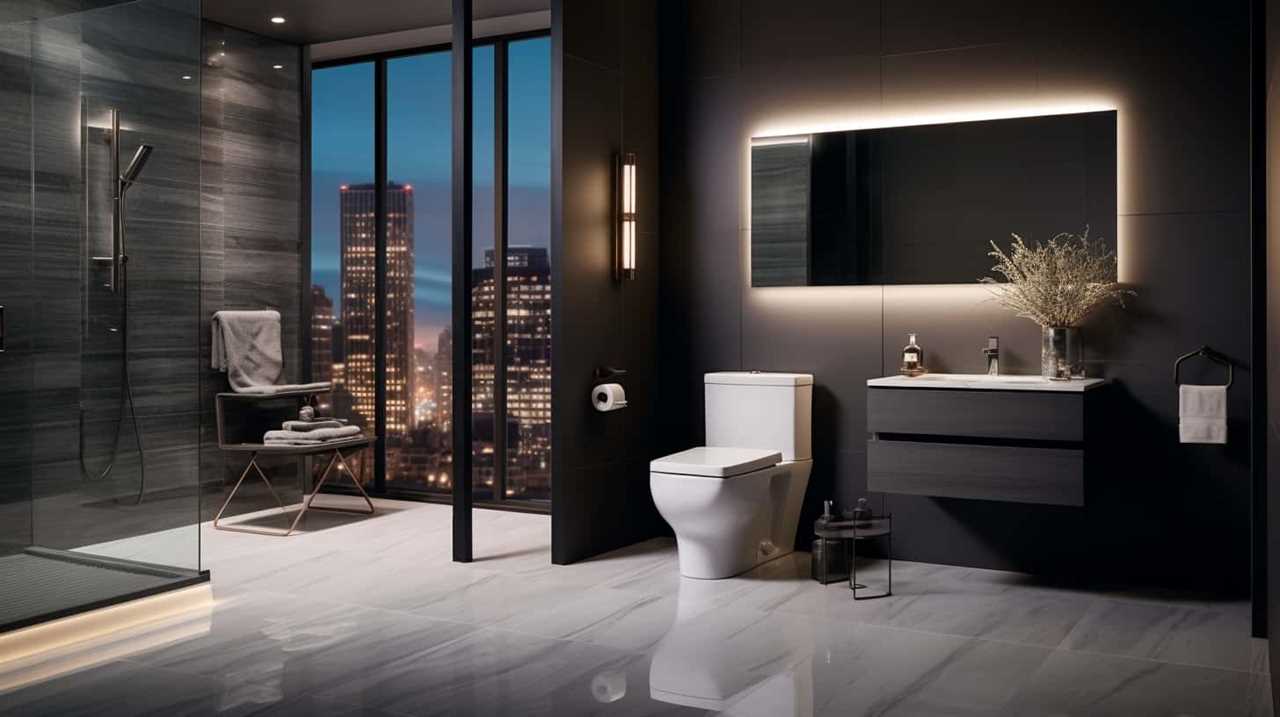
First, these toilets offer significant water conservation benefits by allowing users to choose between a full flush for solid waste or a reduced flush for liquid waste. This feature alone can lead to a substantial reduction in water consumption.
Water Conservation Benefits
As we explore the water conservation benefits and environmental impact of dual flush toilets, it’s important to understand the significant role they play in reducing water usage.
Here are three key benefits of dual flush toilets:
- Water Saving Techniques: Dual flush toilets are designed with two flushing options – a full flush for solid waste and a half flush for liquid waste. By using the appropriate flush option for each type of waste, significant amounts of water can be saved. This water saving technique helps conserve water resources and reduces the strain on water supplies.
- Lower Water Bills: Dual flush toilets can have a direct impact on water bills. By reducing the amount of water used per flush, households can see a decrease in their water consumption, resulting in lower water bills over time. This not only benefits the environment but also allows individuals to save money.
- Environmental Impact: The environmental impact of dual flush toilets is substantial. By conserving water, these toilets contribute to the preservation of natural resources, reduce the energy required for water treatment, and minimize the strain on wastewater systems. Additionally, the reduction in water consumption helps in mitigating the effects of droughts and water scarcity.
Reduced Water Consumption
To further highlight the environmental impact of dual flush toilets, let’s delve into the reduced water consumption achieved through their innovative design.
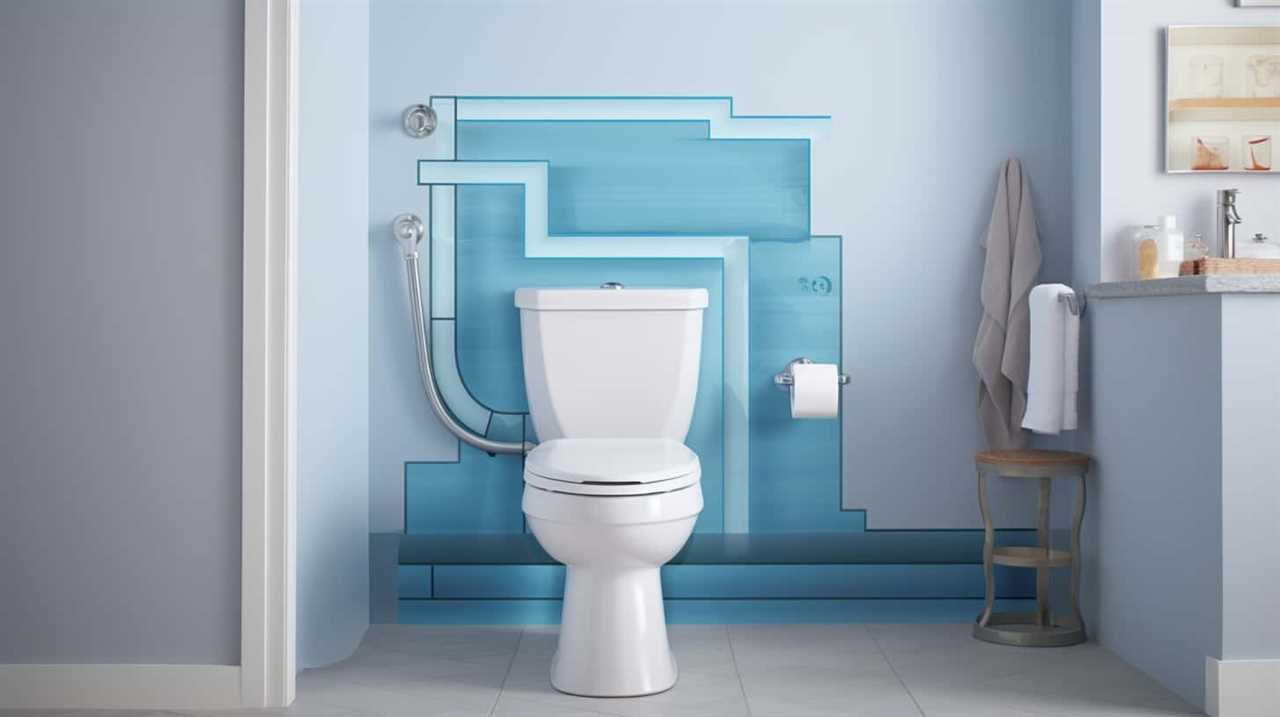
Dual flush toilets employ water conservation methods that significantly reduce the amount of water used during each flush. Traditional toilets typically use around 1.6 gallons (6 liters) of water per flush, whereas dual flush toilets offer two options: a half-flush for liquid waste, using only 0.8 gallons (3 liters), and a full-flush for solid waste, using the standard 1.6 gallons (6 liters).
This sustainable bathroom fixture design not only reduces water consumption but also contributes to water conservation efforts. By utilizing dual flush toilets, individuals can actively participate in conserving water resources and promoting sustainable practices in their homes and communities.
Positive Eco-Friendly Impact
Dual flush toilets have a positive eco-friendly impact by significantly reducing water consumption. This not only benefits the environment but also provides cost savings for homeowners. Here are three environmental benefits of dual flush toilets:
- Water Conservation: Dual flush toilets use significantly less water compared to traditional toilets. The two flush options allow users to select a lower water volume for liquid waste and a higher volume for solid waste, resulting in reduced water usage overall.
- Reduced Pollution: With less water being flushed, dual flush toilets contribute to a decrease in pollution from wastewater treatment facilities. This helps protect our water sources and ecosystems from harmful contaminants.
- Sustainability: By conserving water, dual flush toilets promote sustainable living. They align with the principles of resource efficiency and ensure that our water resources are preserved for future generations.
As we explore the positive eco-friendly impact of dual flush toilets, it becomes clear that they not only benefit the environment but also provide cost effectiveness for homeowners.

Cost Savings With Dual Flush Toilets
Our research shows that using dual flush toilets can result in significant water and cost savings for households. Dual flush toilets are designed with two flushing options, offering a low-volume flush for liquid waste and a higher-volume flush for solid waste. This water efficiency feature allows users to conserve water by using the appropriate flush option based on their needs.
To further illustrate the cost savings potential, here is a table showcasing the average water consumption and potential savings with a dual flush toilet compared to a standard toilet:
| Standard Toilet (Gallons) | Dual Flush Toilet (Gallons) | Savings (Gallons) | |
|---|---|---|---|
| Solid Waste | 1.6 | 1.6 | 0 |
| Liquid Waste | 1.6 | 0.8 | 0.8 |
Dual Flush Installation Process
Now let’s delve into the process of installing a dual flush toilet. Here are three key steps to ensure a successful installation:
- Pre-installation Preparation:
- Turn off the water supply to the existing toilet.
- Remove the old toilet and thoroughly clean the area.
- Check the floor for any damages or unevenness that may affect the installation.
- Dual Flush Toilet Assembly:
- Follow the manufacturer’s instructions to assemble the dual flush toilet components.
- Connect the water supply line to the toilet tank.
- Ensure all connections are tight and secure to prevent leaks.
- Dual Flush Troubleshooting and Common Installation Mistakes:
- Test the flush buttons or levers to ensure they’re functioning properly.
- Check for any water leaks around the tank and base of the toilet.
- Verify the water level in the tank is set correctly.
Maintenance and Cleaning Tips
When it comes to maintaining and cleaning a dual flush toilet, there are a few key points to keep in mind.
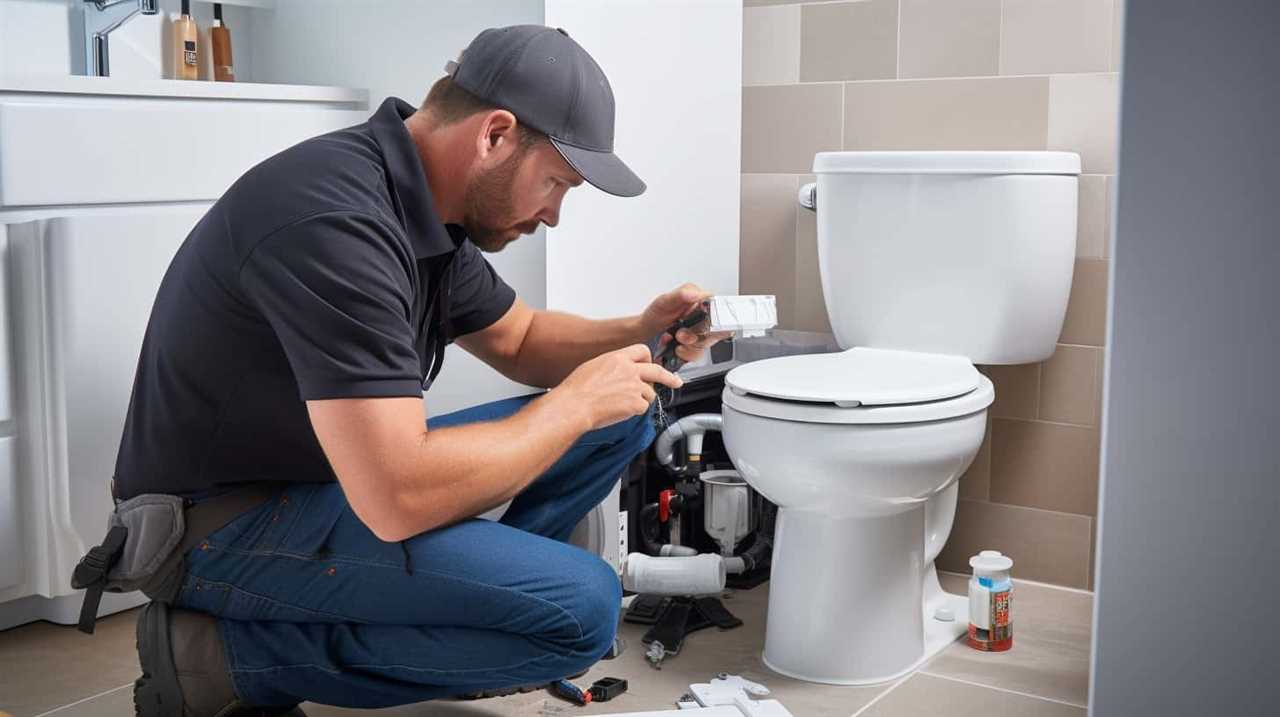
First, it’s important to flush the toilet regularly to prevent any build-up or odors.
Secondly, choosing effective cleaning products that are specifically designed for toilets will help keep it clean and germ-free.
Lastly, taking preventative measures like avoiding flushing items that can cause clogs and regularly checking for leaks will ensure the longevity and efficiency of your dual flush toilet.
Proper Flushing Frequency
To maintain and clean the toilet properly, we should be mindful of the frequency at which we flush. Proper flushing techniques not only ensure that waste is effectively removed from the bowl but also prevent the buildup of stains and odors. Additionally, being mindful of our flushing frequency can have a significant impact on our water bills.
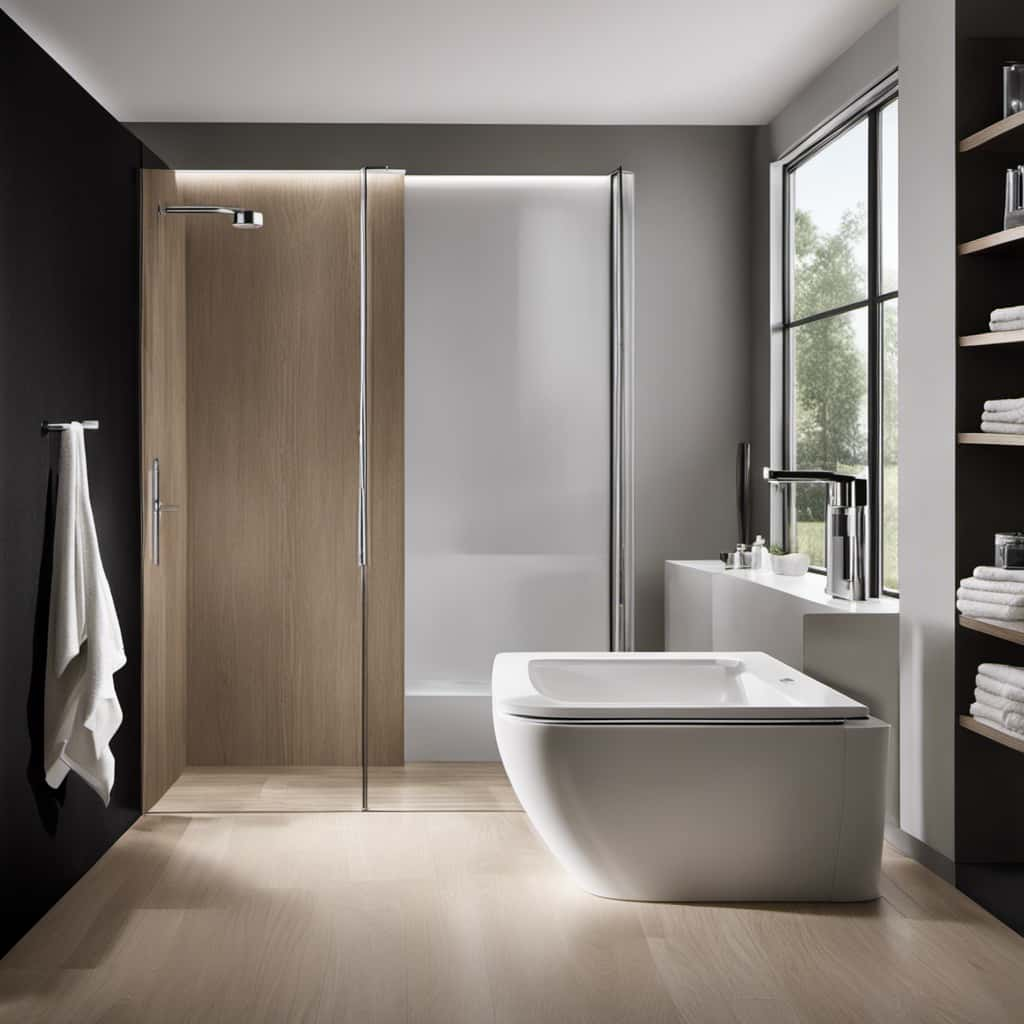
Here are three tips to help you establish the right flushing frequency:
- Flush after each use: It’s essential to flush the toilet immediately after each use to prevent any lingering odors and maintain a clean and hygienic environment.
- Avoid unnecessary flushes: Only flush when necessary, such as after using the toilet or disposing of toilet paper. Avoid using the toilet as a trash can to minimize unnecessary water usage.
- Consider dual-flush toilets: Dual-flush toilets offer different flushing options for liquid waste and solid waste. Using the appropriate flush volume can significantly reduce water consumption.
Choosing Effective Cleaning Products
To maintain a clean and hygienic toilet, we should choose effective cleaning products that can efficiently remove stains and eliminate odors. When selecting cleaning products for our toilets, we should prioritize eco-friendly options that are safe for both our health and the environment.
Eco-friendly products are formulated using natural ingredients and are free from harmful chemicals, making them a better choice for our homes. In addition to choosing eco-friendly products, it’s important to employ effective cleaning techniques.
Start by using a toilet brush to scrub the inside of the bowl, focusing on areas with stains or buildup. Then, apply the cleaning product and let it sit for a few minutes to allow it to break down any grime. Finally, use a toilet scrub brush to thoroughly clean the bowl and flush the toilet to rinse away any residue.
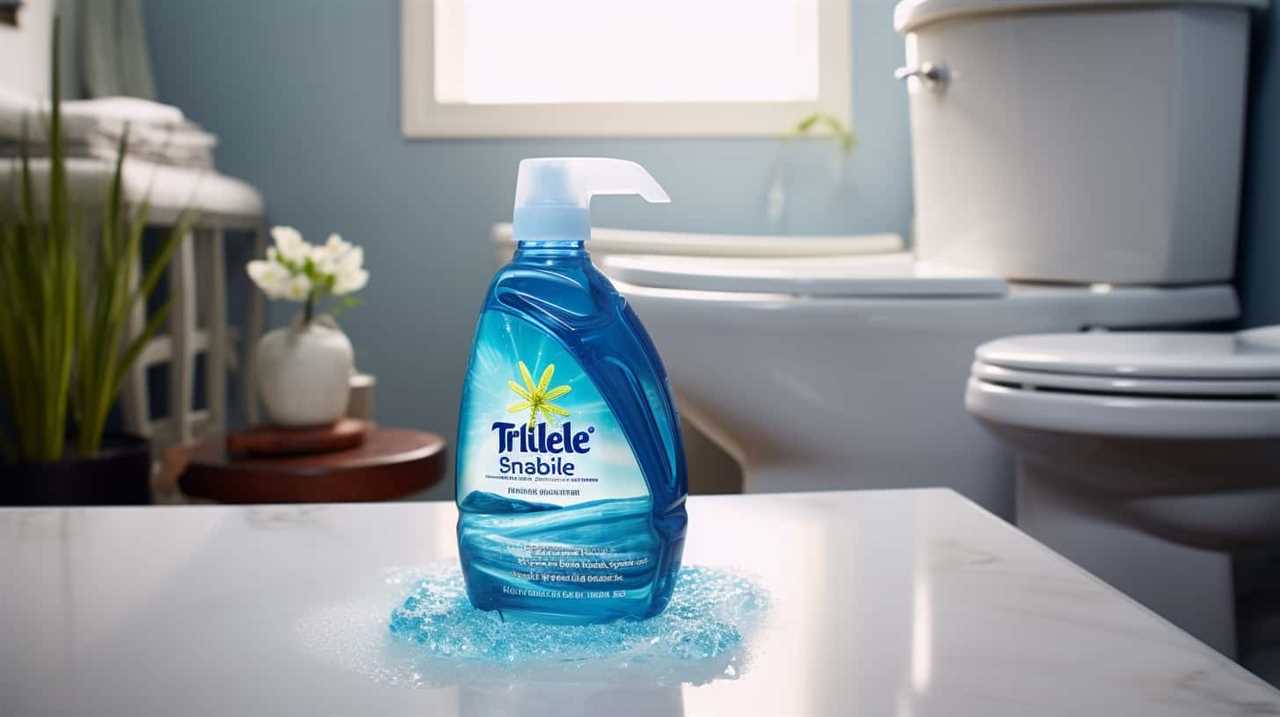
Preventing Clogs and Leaks
One important step in preventing clogs and leaks in our toilets is regularly maintaining and cleaning them. By following these maintenance and cleaning tips, we can ensure the proper functioning of our dual flush toilets and enjoy their water-saving advantages:
- Regularly inspect and clean the rim jets and siphon jets to prevent clogs caused by mineral deposits and debris buildup.
- Use a toilet brush and mild cleaning solution to scrub the bowl and remove any stains or residue.
- Check the flush valve seal and flapper for any signs of wear or damage, and replace them if necessary to prevent leaks and water wastage.
Compatible Plumbing Systems
In our experience, dual flush toilets are compatible with a wide range of plumbing systems. These toilets are designed to work efficiently with both old and new plumbing setups, making them a versatile option for homeowners. The key factor for compatibility is the water consumption of the toilet. Dual flush toilets, with their two flush options – one for liquid waste and another for solid waste – allow for better control over water usage. This means that they can be easily integrated into plumbing systems with varying water pressure and flow rates. Additionally, dual flush toilets often come with adjustable flush settings, allowing users to further customize the water usage according to their specific needs. This adaptability makes dual flush toilets a reliable choice for any plumbing system.
| Pros | Cons |
|---|---|
| Efficient water usage | May require additional installation steps |
| Versatile compatibility | Higher upfront cost |
| Customizable flush settings | Limited design options |
Dual Flush Toilet Brands and Models
As we continue the discussion, let’s explore some of the dual flush toilet brands and models available on the market. Here are three notable options to consider:
- Toto Aquia II Dual Flush Toilet: This model features a sleek design and a powerful flushing system. It offers a dual flush option with a low-flow setting for liquid waste and a higher-flow setting for solid waste. With its WaterSense certification, it ensures water efficiency while maintaining optimal performance.
- Kohler Wellworth Dual Flush Toilet: Known for its durability and reliability, this model offers a dual flush mechanism that helps conserve water. It has a compact design, making it suitable for smaller bathrooms. The Wellworth also features a canister flush valve that provides a powerful flush while minimizing the risk of clogs.
- American Standard H2Option Dual Flush Toilet: This model is designed for maximum water efficiency with its dual flush system. It offers a choice between a partial flush for liquid waste and a full flush for solid waste. The H2Option also incorporates the EverClean surface, which prevents stains and odors, making maintenance easier.
When considering dual flush toilet maintenance and installation, it’s important to consult the manufacturer’s guidelines and follow proper procedures to ensure optimal performance and longevity of the product.
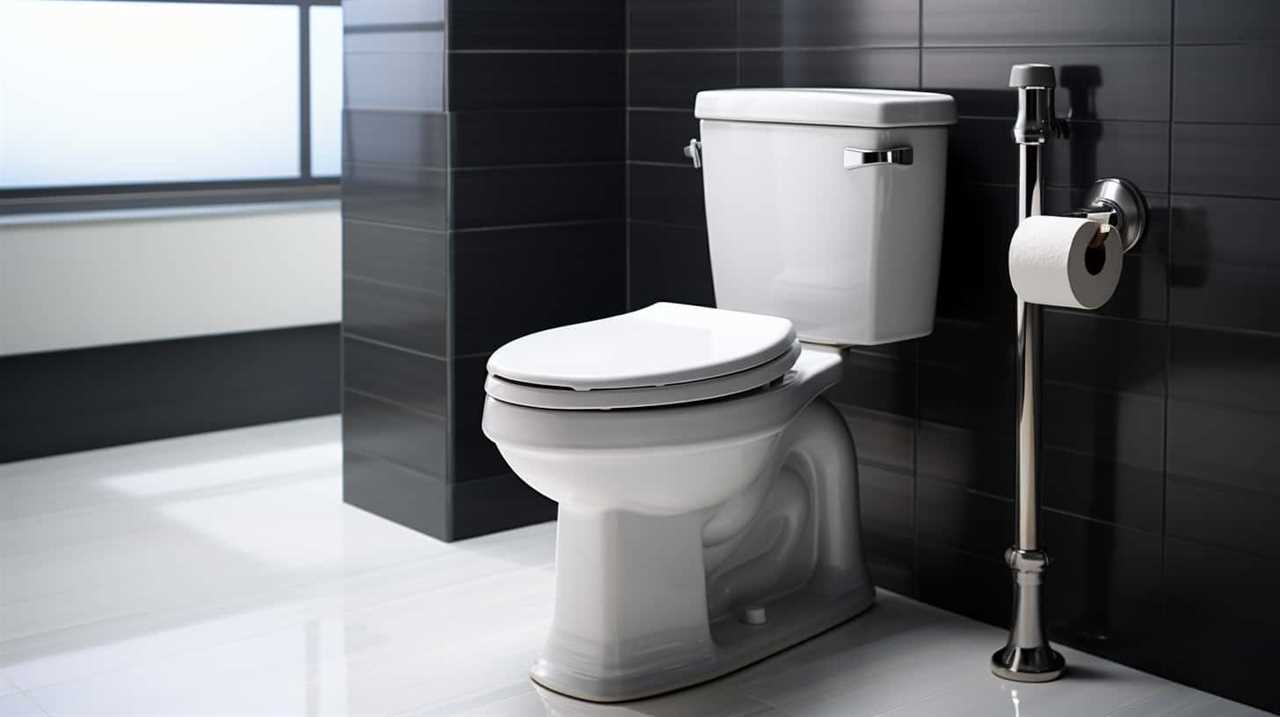
Tips for Choosing the Right Dual Flush Toilet
When choosing a dual flush toilet, there are two important points to consider: water-saving benefits and flushing power comparison.
Dual flush toilets are designed to save water by offering two flushing options – a lighter flush for liquid waste and a heavier flush for solid waste.
It’s crucial to choose a toilet that not only conserves water but also provides sufficient flushing power to effectively remove waste.
Water-Saving Benefits
We highly recommend considering the water-saving benefits and tips for choosing the right dual flush toilet. Dual flush toilets are designed to minimize water usage and promote environmental conservation.
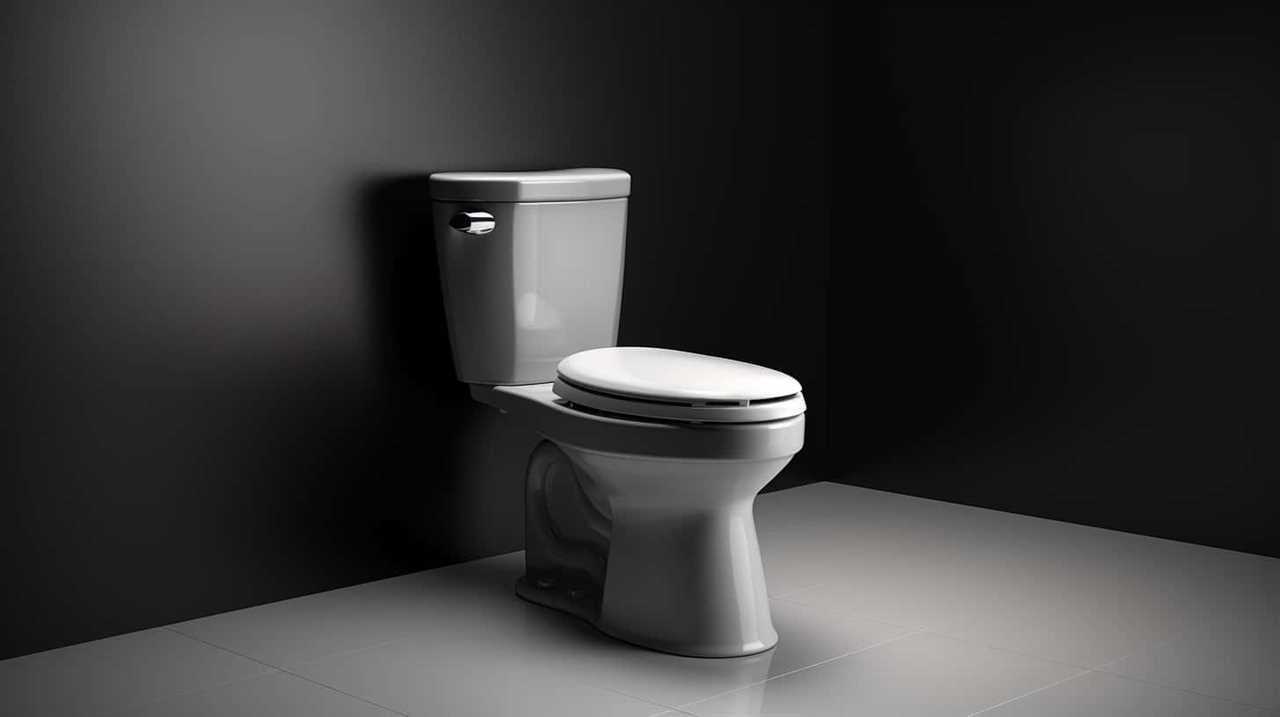
Here are three key water-saving techniques to keep in mind when selecting a dual flush toilet:
- Dual flush mechanism: Look for a toilet that offers two flush options – a low volume flush for liquid waste and a high volume flush for solid waste. This allows you to use less water when flushing liquid waste, resulting in significant water savings over time.
- Water-efficient design: Opt for a toilet that’s certified as water-efficient by organizations such as the Environmental Protection Agency (EPA). These toilets are specifically designed to maximize water savings without compromising flushing performance.
- Adjustable flush settings: Consider a dual flush toilet that allows you to adjust the flush volume according to your needs. This feature lets you customize the amount of water used for each flush, further enhancing water conservation efforts.
By selecting a dual flush toilet that incorporates these water-saving techniques, you can contribute to environmental conservation while still enjoying efficient and effective flushing performance.
Now, let’s move on to the next section and explore the flushing power comparison of dual flush toilets.
Flushing Power Comparison
To compare the flushing power of different dual flush toilets, we can evaluate their performance based on water pressure and waste removal efficiency. Flushing power analysis is crucial in determining a toilet’s effectiveness in removing waste while minimizing water usage.

When it comes to water-saving techniques, dual flush toilets are designed to provide two options for flushing – a full flush for solid waste and a half flush for liquid waste. The flushing power of a toilet depends on the force of water pressure and the efficiency of waste removal. Higher water pressure ensures a stronger flush, while efficient waste removal ensures that waste is completely cleared from the bowl.
When choosing a dual flush toilet, it’s important to consider both water pressure and waste removal efficiency to ensure optimal flushing power.
Conclusion
In conclusion, dual flush toilets offer a water-saving solution for households and commercial buildings. With two flush options, they provide increased efficiency in conserving water resources. Regular maintenance and cleaning are essential to ensure their proper functioning.
When choosing a dual flush toilet, it’s important to consider compatible plumbing systems and the different brands and models available. Overall, dual flush toilets are a practical and environmentally-friendly choice for modern bathrooms.
